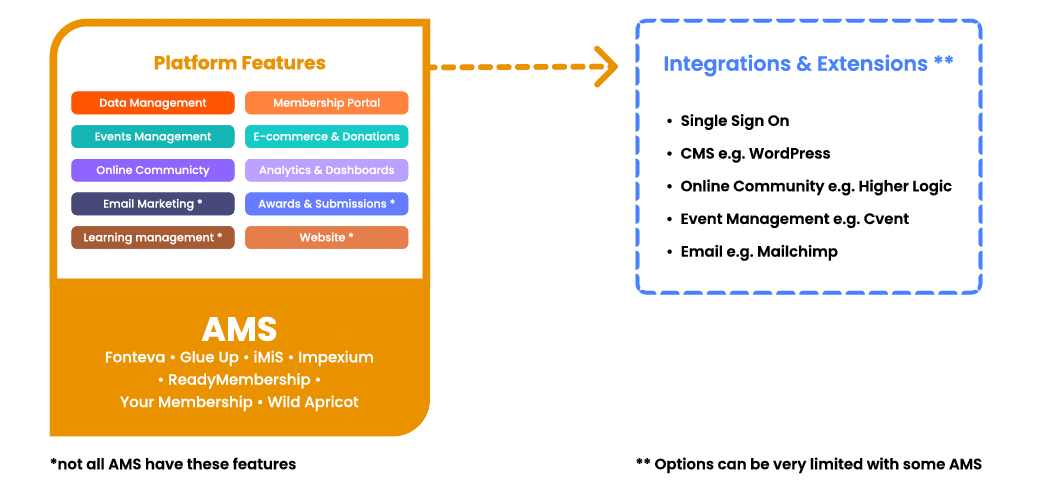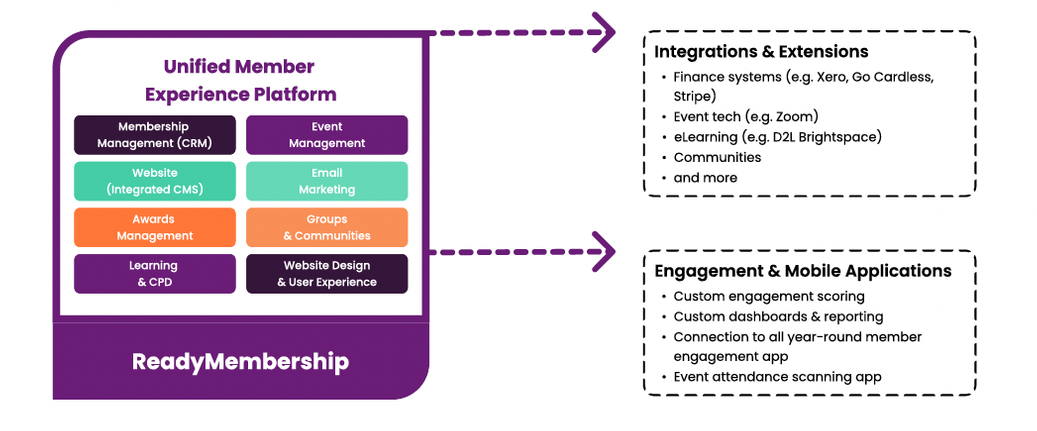Is your data all in one place? The 2023/24 Digital Excellence report by MemberWise shows that data silos are still a big challenge for membership organisations - a quarter of respondents said that their systems aren’t integrated at all and 63% said they were only partially.
Why is this important? Because a single view of data enables you to deliver connected personalised member experiences, leading to greater engagement and increased retention. However, not all single platforms are the same - it's important to know what to look for.
In this blog we look at the differences between an Association Management System (AMS) and a Unified Member Experience Platform (UMXP) across data, insights, user experience and operations. Plus, download a new guide which explains your technology options to drive continuous improvement.
1. Data for membership engagement
An AMS is primarily focused on collecting structured data that is essential for managing membership operations. Conversely, a Unified Member Experience Platform (UMXP) collects structured and unstructured data, capturing real-time and continuous behavioural data from various member interactions.
2. User Experience
An AMS is focused on streamlining administrative functions through features that make membership management, events, finance and communications more efficient: automating renewals, tracking subscriptions, managing event bookings, payments and budgets. Its strength is in managing those core functions and automating their processes.
A unified member experience platform delivers the same operational efficiencies but is also tailored to enhance the overall member experience by providing personalised, engaging interactions. These can include:
- Personalised content delivery: Tailoring content and recommendations based on individual preferences and behaviours.
- Community building tools: e.g. online groups and extending with third-party platforms
- Consistent omnichannel communication: automating communications across email, mobile apps, and websites to ensure a seamless experience
While an AMS is focused on delivering strong transactional user experiences a unified member experience platform is centred on highly personalised membership engagement. The front-end user experience can be poor, leading to frustration from members.
3. Insights & strategy
An AMS is great for seeing core operational insights such as your membership growth, demographics, income and event attendance. These help with your strategic planning, compliance, and operational decision-making.
A unified membership platform gives you deeper behavioural insights: it allows you to understand member journeys, identify popular content and track engagement patterns. You can also run predictive analysis - anticipate member needs, identify potential drop-off points and proactively address them.
Having deeper insights which inform strategies for personalisation, engagement, and retention, helps drive continuous improvement in member experience.
4. Advance AMS features (and flexibility)
While these two types of systems may seem similar, scratch below the surface and you’ll find big differences. Some AMS can have limited features - for example, they might not have website, email marketing or learning management. They can also have limited customisation options.

A big difference with a unified member experience platform is flexibility and hyper-personalisation. They are highly configurable and can grow with you as your business grows. All essential features are available out of the box, and their flexibility means that you can unlock features and extend and integrate with third-party software as your needs change.

5. Which approach is right for me?
While a standard AMS provides a solid foundation for managing your membership organisation, the evolving landscape demands more sophisticated tools and features.
By exploring enhanced member engagement, advanced data analytics, seamless integrations, scalable solutions, improved member experience, and robust security, you can ensure your organisation not only meets but exceeds member expectations.
Understanding your association’s needs starts with knowing where you are now. Our parent company Pixl8 has created a guide to continuous improvement to help you assess what you need from your people, processes and technology to be in the best place for ongoing success. Fill in the form to download your copy.
